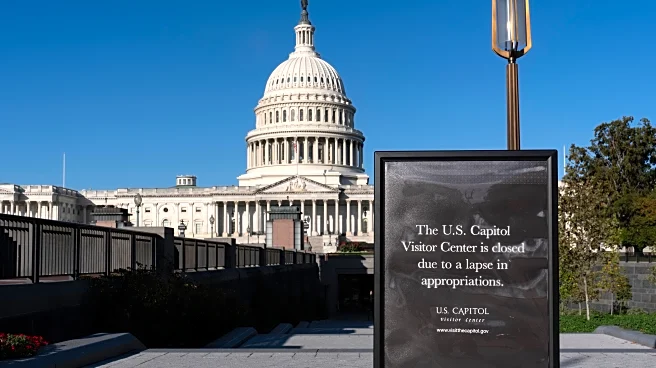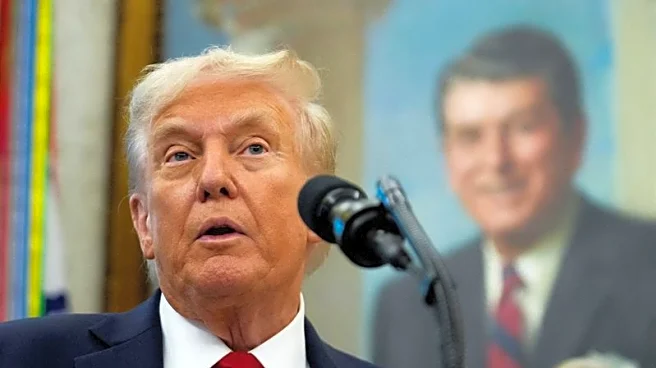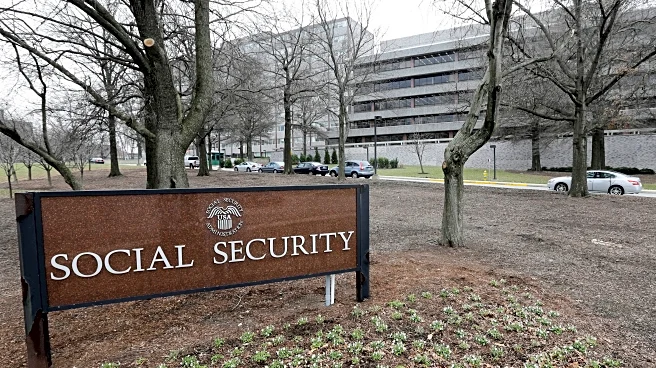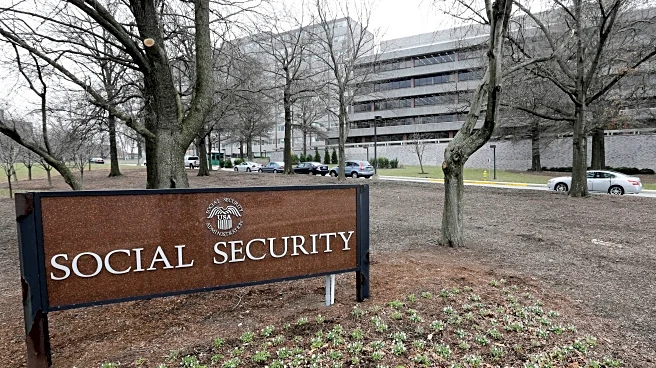What's Happening?
A federal judge in San Francisco has issued a temporary restraining order preventing the Trump administration from proceeding with layoffs of federal workers during the ongoing government shutdown. The
decision by U.S. District Court Judge Susan Yvonne Illston halts the White House's plans to send reduction-in-force notifications to over 4,000 federal employees. The Trump administration had anticipated more than 10,000 job cuts as part of its shutdown strategy. The ruling comes as the Senate continues to reject stopgap funding bills, prolonging the shutdown, which is now in its 16th day.
Why It's Important?
The judge's decision to block layoffs during the government shutdown is significant as it temporarily protects thousands of federal employees from losing their jobs. This move highlights the legal challenges faced by the Trump administration in implementing its shutdown strategy. The ongoing shutdown has broader implications for government operations and services, potentially affecting public policy and economic stability. The uncertainty surrounding the shutdown and its resolution continues to impact federal workers, government contractors, and the general public.
What's Next?
With the temporary restraining order in place, the Trump administration may need to explore alternative strategies to address the shutdown's impact on federal workforce management. The legal battle over layoffs could lead to further court proceedings, influencing the administration's approach to resolving the shutdown. As the Senate remains deadlocked on funding bills, stakeholders will be closely monitoring developments to assess potential outcomes and their implications for government operations and employee job security.
Beyond the Headlines
The legal intervention in the government shutdown underscores the complex interplay between executive actions and judicial oversight. The case highlights the role of the judiciary in safeguarding employee rights and ensuring adherence to legal standards during political and economic crises. The broader implications of the shutdown, including its impact on public services and economic stability, continue to be a focal point for policymakers and civil society groups.













